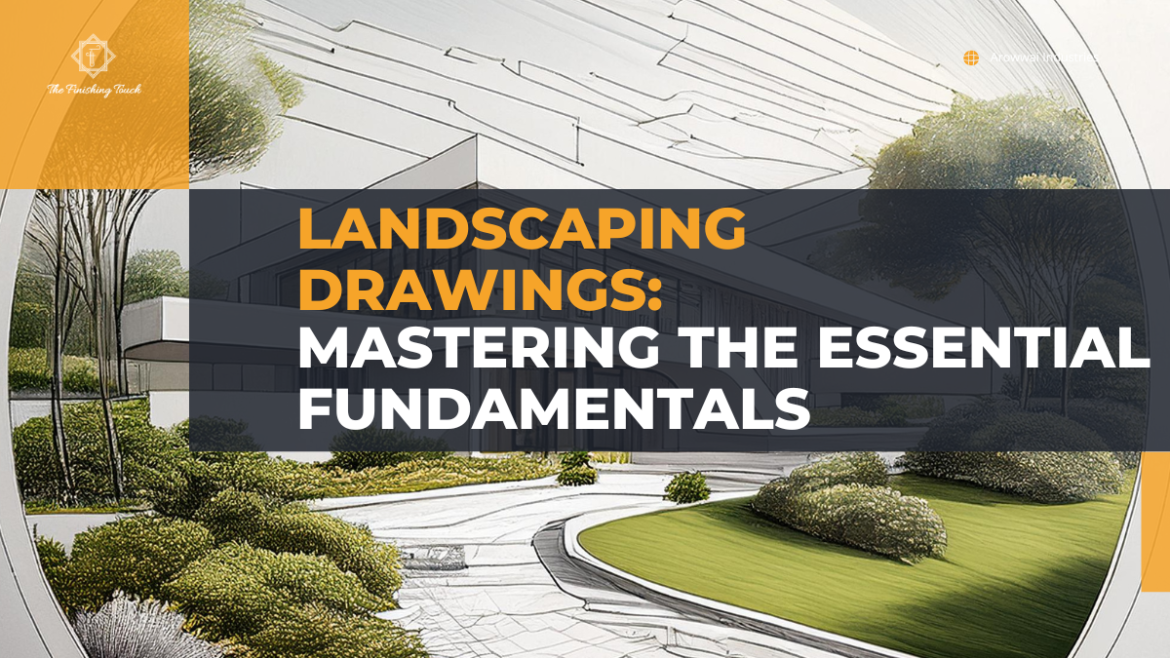Landscaping Drawings: Mastering the Essential Fundamentals

Whenever it comes to getting great landscaping done by someone, often as an amateur landscape architect or hobbyist gardener or professional gardener you’ll have to master your drawing skills. Having mastered landscaping drawings will help you visualize your ideas and effectively communicate them to customers, contractors and other parties concerned. This blog will guide you through the principles of landscape drawing that are still applicable today and consequently assist in making beautiful functional well-structured designs aimed at bringing your specific dreams into reality.
The Importance of Landscaping Drawings
Landscape drawings serve as the basis for any landscaping job; they show layouts, plant selections, hardscaping structural components etc. There are several reasons why these drawings are so important:
- Seeing Is Believing: Through landscaping drawings both clients and designers can see what a project will look like when it is finished. They convert ideas from esoteric to material hence aiding in evaluating design as well as necessary changes.
- Conversations: For instance when working with people such as gardeners, contractors on projects, stakeholders, landscaping drawings convey essential instructions to them.
- Planning and Execution: An adequately drafted landscape drawing can be regarded as a detailed plan that guides the execution/implementation phases of the project. This helps ensure that every element is accurately positioned and that the project adheres to its budget and timeline.
Understanding the Basics of Landscaping Drawings
Before discussing the techniques and tips for creating landscaping drawings, it is important to understand common types of landscaping drawings and what makes up a complete landscape plan.
Types of Landscaping Drawings
- Conceptual Sketches: For rough, freehand drawings which capture initial ideas and designs about a landscape concept these are the most common. Conceptual sketches are usually the design process’ first step during which different layouts and arrangements may be done before settling on one final plan.
- Site Plans: A site plan is a detailed, scaled drawing of the whole piece of land including existing structures, topography and trees. This is where your whole landscaping drawings start from to give your design an outline.
- Planting Plans: In this type of drawing, there is more focus on choosing plants and arranging them on those spaces they will grow well in. It includes information about species such as size, spacing, form etc., ensuring that such species will grow successfully in those areas where they have been planted.
- Hardscape Plans: The non-living components of the landscape, such as patios, footpaths, retaining walls, and water features are detailed in hardscape plans. These drawings integrate hardscape elements into the total scenery design plan.
- Elevation Drawings: These drawings give a side view of the landscape, indicating the vertical relationship between various components. They are useful for relating plants’ heights to walls and other structures in relation to the entire area.
Essential Components of Landscaping Drawings
- Scale and Proportion: For all landscape plans to work as desired, they need to be well scaled. Scale is the ratio of drawing size to actual landscape size while proportion ensures that all elements fit correctly with each other.
- Symbols and Notations: To enhance clarity and precision in their designs, most landscapers adopt some common symbols for trees, shrubs or hard-scape that will help them depict different elements on paper. Notations if included will provide more specifications concerning plant names, material descriptions among other things.
- Colour and Texture: The drawing for your landscape can be distinguished from each other and made visually attractive by adding colours and structures. For instance, a different shade of green means different kinds of vegetation, while an image containing hatching could show hard landscape materials.
- Lighting and Shadows: One ought to consider the way light interacts with a landscape design during different times of the day and throughout the entire year. Drawing in light and shadows adds depth as well as realism in understanding how the terrain will appear under different lights.
Tips for Creating Effective Landscaping Drawings
Accomplishing a perfect landscape picture needs an acquisition of creativity, an appropriate dexterity and practice. These are the points necessary for you to learn on the art of landscape drawing:
- Start with a Site Analysis
Prior to starting on the drawing, do an in-depth site survey to understand the current situations of the landscape. The survey done should include things like topography analysis, quality of soil examination, drainage assessment, sun exposure level as well as present plants. A comprehensive site investigation would be recommended for your design choices thus bringing forth a sustainable and functional outcome at the end.
- Use a Base Plan
A base plan is a simpler version of site plans meant to act as foundation for your landscape drawing. It consists merely of such basic structures as borders, current buildings and points of interest within any given property. With its use one is relieved from thinking outside these lines as far as upholding facts is concerned while placement accuracy still remains possible.
- Experiment with Different Layouts
Prior to making up one’s mind regarding final design options it is wise not to adhere just too quickly to preferred layout but rather try several layouts first before making any commitments concerning them afterwards. Conceptual sketches can allow different possibilities others may generate on their own while working on their interactions and placement within the whole scheme under consideration would be examined further if necessary using this exercise over again until relevant modifications are made resulting in coherent balanced beauty known today!
- Include Functionality
A well-crafted landscape design needs to be functional apart from being appealing. While planning, think of the purpose of the area, people using it and practical needs which ought to be fulfilled. For example, in the case of designing a landscape for commercial purposes; paths, sitting areas and signs are some of the things you may add. When it comes to a residential landscape, consider the homeowners’ desires like privacy, fun zones and children’s play spaces.
- Establish Equilibrium Between Hardscape & Softscape Elements
Good landscaping finds a balance between hardscape (inanimate features) & softscape (animate elements). When there is more hard surface than soft surface; this creates an unwelcoming feel since they do not support life. It is advisable that you combine both so as to use hardscapes to clearly define areas while employing softscapes for shades and liveliness.
- Plan For Growth & Change
Landscapes are not static but dynamic over time due to many factors including weather change or soil degradation among others.Making sure our landscapes are designed regarding future plant developments becomes critical if we want them not overcrowded because they will grow eventually, also seasons need consideration when thinking about how the garden will appear during different times of the year.
- Sustainable practices should be considered
Today’s world increasingly values sustainable landscaping practices. For instance, think about how you can incorporate some sustainable elements such as using native species of plants or designing rain gardens with permeable paving while generating your landscape sketch. This will not only help in preserving nature but also reduce the cost of maintaining a garden and increase its durability.
- Assessing and modifying
After finishing your landscaping plan drawing, it is important to examine it carefully before proceeding with other things. In terms of accuracy, scaling as well as proportionality are the first things that need looking at; other aspects like symbols and notes must remain clear-cut and cohesive throughout too. Additionally, request feedback from other designers, clients or stakeholders if possible and be willing to change in order to enhance the final product.
Professionals Deal In Landscaping Drawings
For professional landscapers, landscape drawing is an important ability that helps them to secure clients, acquire permits and oversee construction processes.
- When it comes to residential landscaping, these drawings are vital in creating personalized outdoor areas which reflect the personal tastes as well as lifestyle of the homeowner.
- In commercial landscape design, they ensure that the projects comply with regulations, make optimal use of resources and leave good impressions for everyone visiting or passing by.
- The balance and beauty of a place’s landscape can be achieved by combining natural elements with artificial ones. Unique and indigenous plants can be obtained from professionals like Natural Exotic Plant Dealers in Kolkata while high-quality artificial plants can be acquired from professionals like the Premium Artificial Plant Dealers in Kolkata.
Conclusion: Mastering Landscaping Drawings for Successful Projects
Landscaping drawings is importantTo create outdoor spaces effectively and to communicate the ideas well enough that they are successfully implemented. In order to create the perfect garden in your home or business premises you must first understand how to draw landscapes as a basic form of drawing. Landscape design combines creativity and knowledge about earth processes or other aspects of biology resulting in a field that can be considered both an art and science requiring imagination, exactness and comprehension of one’s surroundings.

